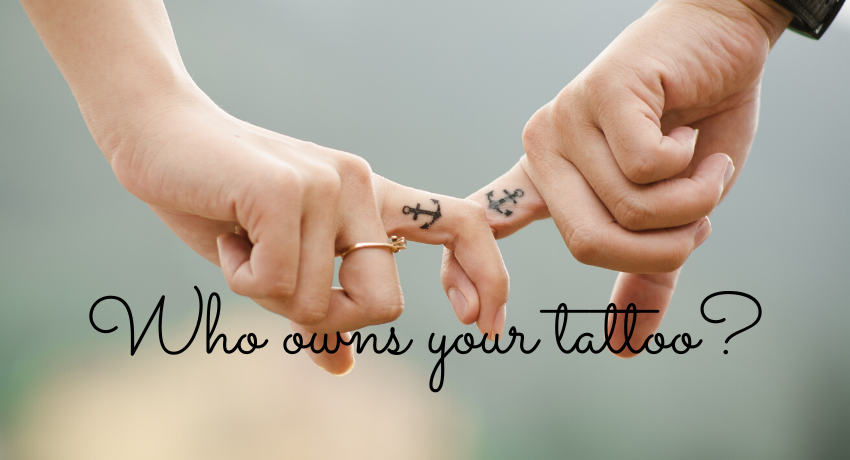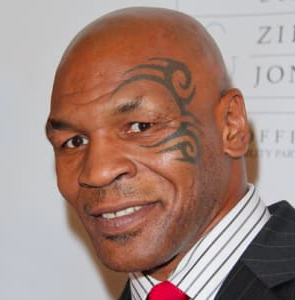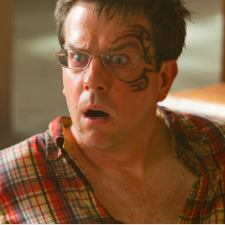
Tattoos are not only a form of self-expression, telling a lot about the person who bears them, but it is also, undeniably, an art (most of them anyway). According to 2019 statistics, Italy is the country with more tattooed people, followed by Sweden and the US. Although acceptance may vary from country to country (Japanese people still associate tattoos with the Yakuza or Japanese mob), it has become something quite common in Europe.
But who owns your tattoo? Tattoos are drawings. Regardless of the medium, drawings are protected by copyright. Hence, copyright law will most likely affect what designs tattoo artists are allowed to ink on to people, and how their own artworks are used.
Disputes over the ownership of designs could, therefore, arise.
Legal provisions
In Europe, copyright protection for literary, dramatic, musical or artistic works extends to a maximum of 70 years from the death of the author. This means that you can tattoo a copy of a Leonardo da Vinci painting on to someone, but you would need permission to use a Takashi Murakami.
More often than not, tattoo artists will be granted permission to use another person’s designs when they reach out to the artist. However, tattoo artists have been sued or threatened with a lawsuit by the original artists regarding unauthorized uses and tattoo artists themselves have also enforced their rights when others have appropriated it. Below, a few examples of disputes over tattoos.
Mike Tyson's tattoo
The most famous US case centred on the facial tattoo of ex-boxer Mike Tyson. The artist who created it, Victor Whitmill, sued Warner Brothers for copyright infringement in 2011 because he claimed that the film studio prominently featured his design in the movie “The Hangover Part II” and its advertising.

|

|
According to Whitmill, he drew Tyson’s tattoo freehand directly on to his face. It wasn’t copied from a flash sheet, nor did Tyson brought a design of his own. Could this neo-tribal work be considered as “original” in order to obtain copyright protection?. According to the US courts, yes since copyright protects specific expressions of concepts and ideas, even common ones.
In this case, the question of the ownership of Tyson’s tattoo was easily resolved because Whitmill had Tyson sign an agreement stating that Whitmill alone owned the rights to the tattoo. According to Whitmill’s defense, when you apply a work of art to a visible part of a person’s body, celebrity or not, there is an implied license that, as long as that tattoo “stays” on that person, it becomes part of that person’s identity. So the problem arises when you take the tattoo off the person’s body (which is the case here as the tattoo was used on someone who is not Tyson), that’s when you could consider that there is an unautorised use.
Warner Brothers argued that the use of the design was a parody and therefore fell under the “fair use” defence under US law (in Europe, the InfoSoc Directive established an exception for parody and pastiche). The case ended with Whitmill securing a financial settlement.
Most celebrities have since secured the rights over their tattoos to avoid any potential infringement issues in the future.
NBA2K and the use of basketball player’s tattoos
Take Two Interactive is the company behind “NBA 2K”, a basketball, cross-platform game where all NBA players are represented. Because they want characters to look like their real living counterpart, Take Two also represents the NBA’s athlete's tattoos.
Now, this didn’t sit too well with Solid Oak Sketches who owns 8 tattoo designs created by 3 artists: four on LeBron James’ arm (a child portrait, the words “On My Own,” a “330” area code and a script with scrolls, clouds, and doves); a crown with butterflies on Kobe Bryant’s bicep, a wizard on Kenyon Martin’s shoulder, a script with a scroll on DeAndre Jordan’s shoulder and a basketball with stars and script on Eric Bledsoe’s shoulder. Solid Oak considered that by publicly displaying these distinctive tattoos, Take Two was infringing its Copyright.
Now, a Manhattan federal judge has ruled in favour of Take Two by establishing that there is no copyright infringement, mainly due to fair use and the fact that the tattoos are not the most important part of the game (being blurred most of the time or not even visible when other players are blocking them). In addition, the tattoo artists always knew that these tattoos they draw on NBA stars would appear in public, on television, in commercials, or in other forms of media, like video games.
Hence, NBA players are free to use their likeness however they wanted. This entails that when the players concerned (Bryant, James, Martin, Jordan, and Bledsoe) gave the NBA and Take-Two permission to accurately portray them in video games, they also give them permission to reproduce their tattoos.
Should we, non-famous people, worry?
Without written agreements, which most people do not have, the question of ownership can get complicated, especially when dealing with custom work. Paying for a tattoo does not automatically transfer the rights to the client.
If a customer comes to a studio with an idea but not a design, and the artist creates an original drawing for the customer and then tattoos it, who would own the design in the absence of an agreement?
As we have already told multiple times, copyright does not protect ideas, but the expression of said idea. Therefore, if the client only has a vague idea of what the tattoo should look like, it is unlikely that he could argue that he is the joint owner. However, if the client does contribute to the design by deciding on important elements, such as the composition, then it could be argued that the client and tattoo artist share rights.
Should you bring your lawyer the next time you schedule your tattoo appointment? If you are not a celebrity, no. While putting an agreement in writing is almost always great advice, it is out of place in the tattoo studio, especially since the relationship artist/client, most often than not, becomes a personal one.
Conclusions
Most of the tattoo cases to date share an important feature: the tattoo was used in a commercial work and was not displayed in its original state, meaning it was not on the body of the celebrity who initially acquired it. In the case concerning the NBA2K video games, the tattoo was reproduced on a digital rendition of the players. In The Hangover: Part II, the tattoo was depicted on an actor who was not Mike Tyson.
With all this in mind, many entities are not taking the chance that a future court may grant additional protection for different circumstances. For example, the NFL Players Association has asked all football players to get releases from tattoo artists before any future ink is applied. If a player fails to get a release, the NFLPA may require that player to indemnify and hold harmless the NFLPA from any and all claims made by the player's tattoo artist.
Details
- Publication date
- 24 April 2020
- Author
- Executive Agency for Small and Medium-sized Enterprises
